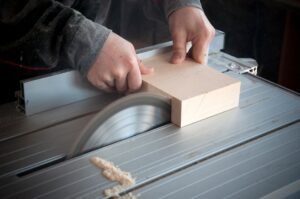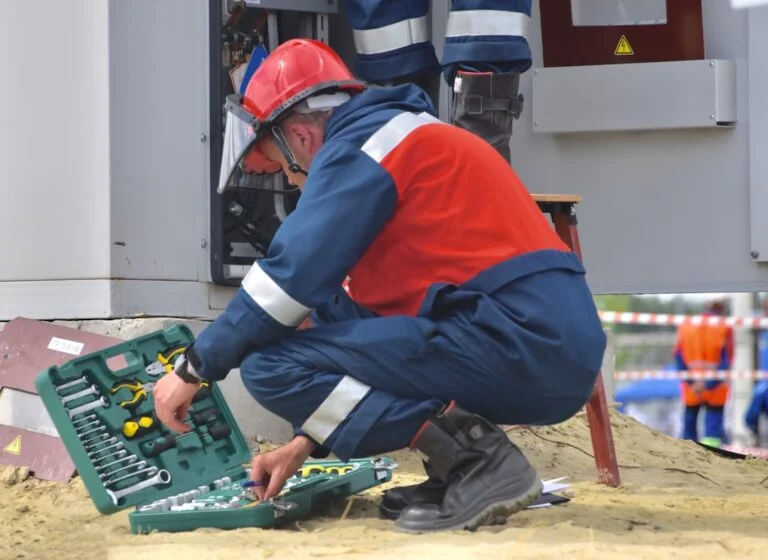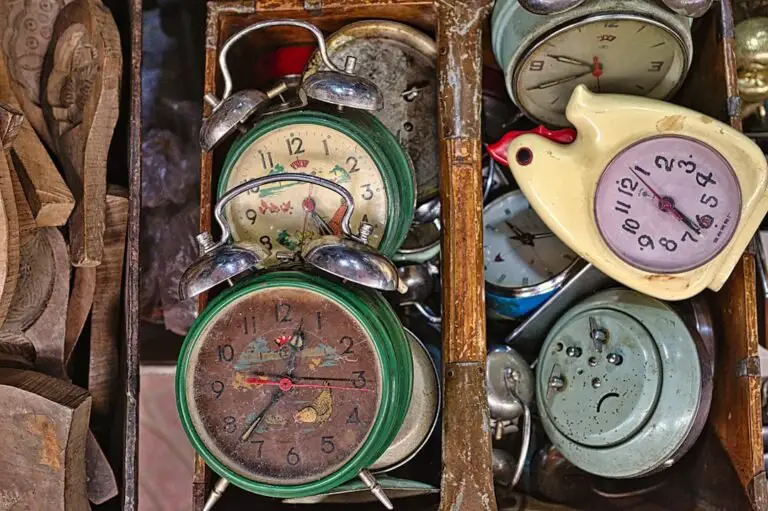Essential tools are crucial for successful do-it-yourself (DIY) projects. A well-equipped toolbox should contain versatile instruments suitable for various tasks, regardless of the user’s experience level. Key tools for any DIY enthusiast include:
1.
Hammer: A multipurpose tool used for driving nails, removing fasteners, breaking materials, and shaping metal. 2. Screwdriver: Available in various types and sizes, screwdrivers are necessary for inserting and removing screws in different materials.
3. Wrench: Essential for tightening and loosening nuts and bolts in numerous applications. These three tools form the foundation of a basic toolbox and are indispensable for many DIY projects.
Additional important tools include:
– Pliers
– Tape measure
– Level
– Utility knife
Having a comprehensive set of tools enables DIY enthusiasts to approach a wide range of projects with confidence and efficiency. A well-stocked toolbox is an invaluable asset for both novice and experienced DIYers, facilitating smoother project execution and potentially improving outcomes.
Key Takeaways
- A good set of tools is essential for every DIY project
- A quality hammer is a must-have in your toolbox for various tasks
- A screwdriver is a versatile tool that can be used for a wide range of DIY tasks
- A trusty wrench is essential for every DIYer’s arsenal for tightening and loosening nuts and bolts
- When choosing tools for your DIY projects, consider the specific tasks you will be performing and invest in high-quality, durable tools
- Always prioritize safety when using DIY tools, including wearing protective gear and following proper usage guidelines
- Proper maintenance and care of your DIY tools is crucial for their longevity and performance
The Importance of a Quality Hammer in Your Toolbox
Types of Hammers
There are several types of hammers available, each designed for specific tasks. Claw hammers are the most common type of hammer and are ideal for driving nails and removing them with the claw end. Ball peen hammers are designed for shaping metal and striking chisels, while sledgehammers are heavy-duty tools used for breaking up materials.
Choosing the Right Hammer
When choosing a hammer for your toolbox, consider the type of projects you’ll be tackling and choose a hammer that is suitable for those tasks. In addition to choosing the right type of hammer, it’s important to invest in a high-quality tool that is comfortable to use and built to last. Look for a hammer with a comfortable grip, a durable head, and a well-balanced design.
The Benefits of a Quality Hammer
By investing in a quality hammer, you’ll have a versatile tool that will serve you well for years to come. With the right hammer, you’ll be able to tackle a wide range of tasks with ease and confidence, making it an essential addition to any DIYer’s toolbox.
The Versatility of a Screwdriver for Various DIY Tasks

Screwdrivers are one of the most versatile and essential tools for any DIYer. From assembling furniture and installing fixtures to repairing electronics and appliances, screwdrivers are crucial for driving and removing screws in a wide range of materials. There are several types of screwdrivers available, each designed for specific tasks, and having a variety of screwdrivers in your toolbox will ensure that you’re well-equipped to tackle any project.
The most common types of screwdrivers include flathead and Phillips head screwdrivers, which are designed for driving and removing screws with corresponding head types. Additionally, there are specialty screwdrivers such as Torx, hex, and square drive screwdrivers that are designed for specific applications. By having a variety of screwdrivers in your toolbox, you’ll be prepared to tackle any project that comes your way.
When choosing screwdrivers for your toolbox, it’s important to invest in high-quality tools that are durable and comfortable to use. Look for screwdrivers with comfortable grips, magnetic tips for easy screw retrieval, and durable shafts that won’t bend or break under pressure. By investing in quality screwdrivers, you’ll have versatile tools that will serve you well for years to come.
Why Every DIYer Needs a Trusty Wrench in Their Arsenal
| Reasons | Benefits |
|---|---|
| 1. Versatility | A wrench can be used for various tasks such as tightening or loosening nuts and bolts. |
| 2. Essential tool | It is a fundamental tool for any DIY project or home repair. |
| 3. Time-saving | Using a wrench can save time and effort compared to using other tools. |
| 4. Cost-effective | Owning a trusty wrench can save money on hiring professionals for simple repairs. |
| 5. Accessibility | Having a wrench readily available can make DIY tasks more convenient. |
A trusty wrench is an essential tool for any DIYer, as it is crucial for tightening and loosening nuts and bolts in a variety of applications. Whether you’re assembling furniture, working on your car, or tackling plumbing repairs, having a quality wrench in your toolbox is essential for getting the job done efficiently and effectively. There are several types of wrenches available, each designed for specific tasks, and having a variety of wrenches in your arsenal will ensure that you’re well-equipped to tackle any project.
The most common types of wrenches include adjustable wrenches, combination wrenches, socket wrenches, and open-end wrenches, each designed for specific applications. Adjustable wrenches are versatile tools that can be adjusted to fit various sizes of nuts and bolts, while combination wrenches have a box end on one side and an open end on the other for versatility. Socket wrenches are ideal for tightening and loosening nuts and bolts in hard-to-reach places, while open-end wrenches are designed for use in tight spaces.
When choosing wrenches for your toolbox, it’s important to invest in high-quality tools that are durable and comfortable to use. Look for wrenches with comfortable grips, durable construction, and precise sizing to ensure a secure fit on nuts and bolts. By investing in quality wrenches, you’ll have versatile tools that will serve you well for years to come.
Tips for Choosing the Right Tools for Your DIY Projects
When it comes to choosing the right tools for your DIY projects, there are several factors to consider to ensure that you have the right tools for the job. First and foremost, consider the type of projects you’ll be tackling and choose tools that are suitable for those tasks. For example, if you’ll be working on woodworking projects, invest in quality saws, chisels, and clamps.
If you’ll be tackling plumbing repairs, invest in quality pipe wrenches, pliers, and pipe cutters. In addition to considering the type of projects you’ll be tackling, it’s important to invest in high-quality tools that are durable and built to last. Look for tools with comfortable grips, durable construction, and precise sizing to ensure that they will stand up to the demands of your projects.
Additionally, consider investing in power tools such as drills, saws, and sanders to make your DIY tasks easier and more efficient. Finally, consider the storage and organization of your tools to ensure that they are easily accessible when you need them. Invest in a quality toolbox or tool chest to keep your tools organized and protected when not in use.
By following these tips, you’ll be well-equipped with the right tools to tackle any DIY project that comes your way.
Essential Safety Precautions When Using DIY Tools

Familiarize Yourself with Tool Operation and Safety Guidelines
Before using any tool, it’s crucial to familiarize yourself with its proper operation and safety guidelines to ensure safe and effective use. Always wear appropriate personal protective equipment such as safety goggles, gloves, and ear protection when using power tools or working with materials that can cause injury.
Inspect Your Tools Before Use
Always inspect your tools before use to ensure they are in good working condition. Check for any damage or wear on the tool itself as well as on any cords or attachments. Never use damaged or malfunctioning tools as they can pose serious safety hazards.
Safe Tool Handling and Operation
When using hand tools such as hammers, screwdrivers, or wrenches, always use them as intended and avoid using excessive force or making awkward movements that can lead to strain or injury. When using power tools such as drills or saws, always follow proper operating procedures and never remove safety guards or operate the tool without proper training.
Maintaining a Safe Work Environment
Finally, always keep your work area clean and organized to prevent tripping hazards or accidents caused by clutter or obstructions. By following these essential safety precautions when using DIY tools, you can ensure that you complete your projects safely and without incident.
How to Properly Maintain and Care for Your DIY Tools
Proper maintenance and care of your DIY tools is essential to ensure that they remain in good working condition and last for years to come. Regularly inspect your tools for any signs of wear or damage and address any issues promptly to prevent further damage or safety hazards. Clean your tools regularly to remove dirt, dust, and debris that can cause damage or affect their performance.
For hand tools such as hammers, screwdrivers, and wrenches, regularly inspect the handles for any signs of wear or damage such as cracks or splinters. Clean the metal parts of the tools with a wire brush or steel wool to remove rust or corrosion and apply a light coat of oil to prevent further rusting. For power tools such as drills, saws, and sanders, regularly inspect the cords and attachments for any signs of wear or damage such as fraying or exposed wires.
Clean the blades or bits of the tools regularly to remove built-up debris that can affect their performance. Finally, store your tools properly in a clean, dry environment to prevent rusting or damage from moisture or humidity. Invest in a quality toolbox or tool chest to keep your tools organized and protected when not in use.
By properly maintaining and caring for your DIY tools, you can ensure that they remain in good working condition and last for years to come. Regular inspection, cleaning, and proper storage will help you get the most out of your tools while ensuring safe and effective operation.
If you’re interested in learning more about the latest news in the aviation industry, check out this article about the FAA temporarily grounding the Boeing 737 Max 9 following an incident with Alaska Airlines. It’s important to stay informed about developments in the aviation world, especially if you work with tools clipart related to aircraft maintenance or design.
FAQs
What is tools clipart?
Tools clipart refers to a collection of digital images or graphics that depict various tools such as hammers, screwdrivers, wrenches, saws, and other hand or power tools. These clipart images are often used for educational, professional, or personal purposes to illustrate or enhance presentations, documents, websites, or other visual materials.
Where can I find tools clipart?
Tools clipart can be found on various websites that offer clipart and graphic resources, including stock image websites, clipart galleries, and online design platforms. Additionally, many software programs and applications, such as Microsoft Office and Adobe Creative Cloud, provide built-in libraries of clipart that include tools and other related images.
How can tools clipart be used?
Tools clipart can be used for a variety of purposes, including but not limited to educational materials, presentations, reports, infographics, websites, social media posts, and promotional materials. It can also be used for personal projects such as crafting, scrapbooking, and digital art.
Are tools clipart images free to use?
The availability and usage rights of tools clipart images vary depending on the source. Some websites offer free tools clipart for personal and commercial use, while others may require a subscription or purchase for access to high-quality or premium clipart. It is important to review the licensing terms and usage rights for each specific clipart image before using it.
Can tools clipart be customized or edited?
Yes, tools clipart images can typically be customized or edited using graphic design software such as Adobe Illustrator, Photoshop, or other similar programs. This allows users to resize, recolor, add text, or make other modifications to the clipart to better suit their specific needs or design preferences.




















+ There are no comments
Add yours